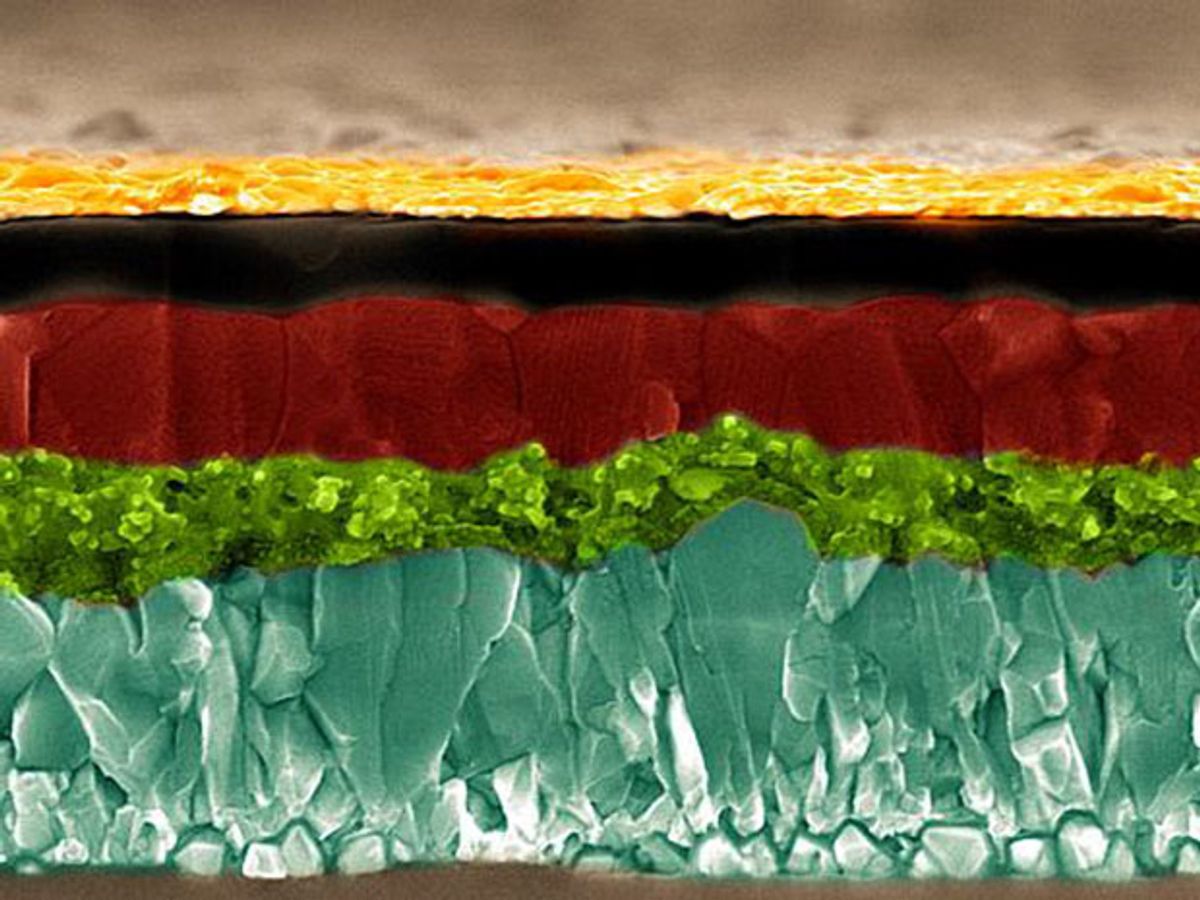The conversion efficiency of solar cells based on perovskite crystals has shot up from 3.8 to 22.1 percent in less than a decade, an unprecedented rise in the field of photovoltaics. "Perovskites have rocked the whole photovoltaic community," says Michael Grätzel, director of the École Polytechnique Fédérale de Lausanne’s Laboratory of Photonics and Interfaces. Trying to keep the progress going, he and his colleagues have found a way to grow bigger, better performing perovskite cells—by growing with ordinary acrylic glass.
Perovskite crystallization is difficult to control, Grätzel says. So makers run the risk of creating unwanted defects that can significantly reduce solar cell performance. "When you crystallize anything out of solution, there has to be some control, otherwise the crystals just grow wildly," he says.
In research published today in the journal Nature Energy, Grätzel and his colleagues reveal that the polymer poly(methyl methacrylate), or PMMA— that is, acrylic glass—can act as a template to help control perovskite crystallization. "It gives you a new handle to make perovskite grow better," Grätzel says.
PMMA is commonly already placed on the back of perovskite devices to protect them from moisture. Dongqin Bi at EPFL figured that since perovskites already tolerated PMMA, the polymer might also serve as a good template for perovskite nucleation and growth, Grätzel says.
"It acts as a scaffold — it's always easier to form crystal nuclei on something that preexists," Grätzel says. "More than that though, the polymer also brings the nuclei closer together to form larger crystals. It's not only a nucleation aid, it's a growth aid."
In experiments, the researchers could reproducibly grow shiny, smooth and stable perovskite films with a conversion efficiency of up to 21.6 percent. "By adding a templating agent to control these two processes, crystal quality is improved both electronically and size-wise," Grätzel says.
The scientists are now working to improve perovskite solar cell efficiency by trying things like changing the cell’s geometry to prevent voltage loss, Grätzel says. "People think an improvement to 24 or 25 percent is doable in the near term," he says.
Future research will also explore other templating agents. For instance, "perovskites love carbon materials," Grätzel says. "Carbon-60 and graphene platelets look very interesting."
Charles Q. Choi is a science reporter who contributes regularly to IEEE Spectrum. He has written for Scientific American, The New York Times, Wired, and Science, among others.



